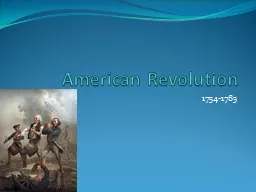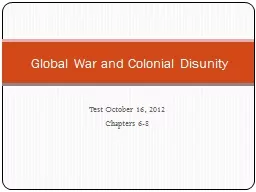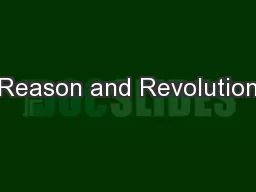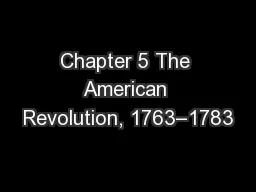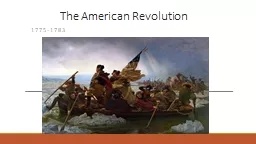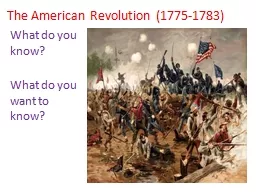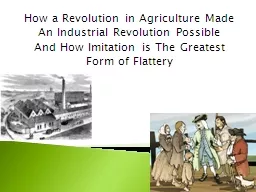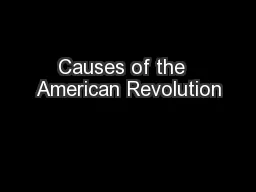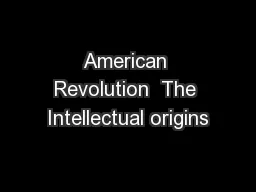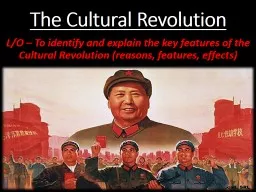PPT-American Revolution 1754-1783
Author : limebeauty | Published Date : 2020-06-18
Major Themes French amp Indian War British Colonial Policies Colonial Resistance Declaration of Independence War of Revolution Post American Society French and Indian
Presentation Embed Code
Download Presentation
Download Presentation The PPT/PDF document "American Revolution 1754-1783" is the property of its rightful owner. Permission is granted to download and print the materials on this website for personal, non-commercial use only, and to display it on your personal computer provided you do not modify the materials and that you retain all copyright notices contained in the materials. By downloading content from our website, you accept the terms of this agreement.
American Revolution 1754-1783: Transcript
Download Rules Of Document
"American Revolution 1754-1783"The content belongs to its owner. You may download and print it for personal use, without modification, and keep all copyright notices. By downloading, you agree to these terms.
Related Documents

